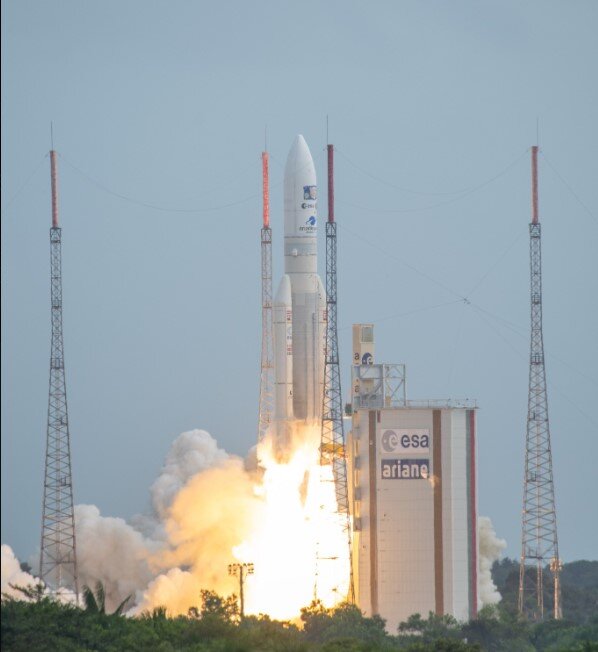
Ibadan, 1 May 2023. – The JUICE (Jupiter Icy Moons Explorer) mission control center in Darmstadt, Germany, along with partners in science and industry, is still working on the JUICE spacecraft as its ice-penetrating Radar for Icy Moons Exploration (RIME) antenna has not deployed as expected. This is as an issue arose with the 16-meter-long RIME antenna, preventing it from releasing from its mounting bracket.
Every day the RIME antenna shows more signs of movement, visible in images from the Juice Monitoring Camera on board the spacecraft with a partial view of the radar and its mount. However, while it is partially extended, the radar is only roughly a third of its full intended length. The current leading hypothesis is that a tiny stuck pin has not yet made way for the antenna’s release. In this case, the team believes that just a matter of millimeters could make the difference in setting the rest of the radar free.
The next steps to fully deploy the antenna include an engine burn to shake the spacecraft a little. After that, mission control will initiate a series of rotations that will turn Juice. As a result, it will warm up the mount and radar, which are currently in the cold shadows. Juice is otherwise performing excellently after the successful deployment and operation of its mission-critical solar arrays and medium gain antenna, as well as its 10.6-m magnetometer boom.
The RIME instrument is an ice-penetrating radar to study the surface and subsurface structure of Jupiter’s icy moons down to a depth of 9 km. It is one of ten instruments on board ESA’s Jupiter Icy Moons Explorer, Juice, set to investigate the emergence of habitable worlds around gas giants and the formation of our Solar System.





